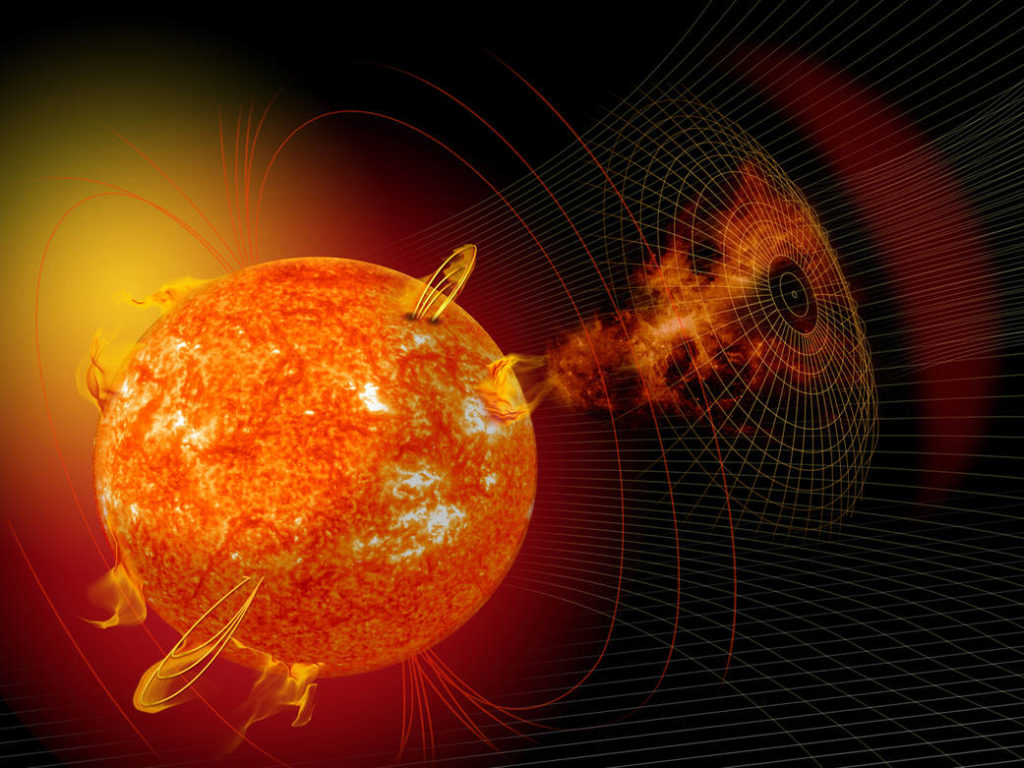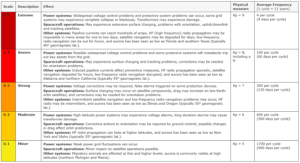
A stream of incredibly fast solar wind has started to impact the Earth today, and the National Weather Service’s Space Weather Prediction Center (SWPC) says G1-class geomagnetic storm conditions are possible tomorrow.
The SWPC has issued a warning with a geomagnetic K index of 4 expected sometime between 1345 UTC and 2359 UTC on June 15. “Area of impact primarily poleward of 65 degrees Geomagnetic Latitude,” the SWPC said in a warning message issued today. Induced currents and weak power grid fluctuations can occur. Aurora, also known as “Northern Lights”, may be visible at high latitudes such as Canada and Alaska this evening.
A G1 Geomagnetic Storm Watch is in effect, with G1-Minor conditions possible on both Wednesday and Thursday. By Friday, the SWPC believes the geomagnetic storm conditions will no longer be present. With this geomagnetic storm, the area of impact is primarily poleward of 60 degrees Geomagnetic Latitude. Induced currents and weak power grid fluctuations can occur on Earth while minor impacts on satellite operations are possible above Earth. The SWPC says that aurora may be visible at high latitudes, such as the northern tier of the continental United States such as Michigan and Maine.

Similar to the bulletins put out by the National Weather Service local forecast offices, SWPC provides Alerts, Watches and Warnings to the public at large about what to expect from Space Weather. These bulletins are levels of severity of the solar activity that can be expected to impact the Earth’s environment.
Scientists with the National Weather Service’s Space Weather Prediction Center are monitoring this unfolding space weather event. While typically known for their weather forecasts, the National Oceanic and Atmospheric Administration (NOAA) and its National Weather Service (NWS) is also responsible for “space weather.” While there are private companies and other agencies that monitor and forecast space weather, the official source for alerts and warnings of the space environment is the Space Weather Prediction Center (SWPC). The SWPC is located in Boulder, Colorado and is a service center of the NWS, which is part of NOAA. The Space Weather Prediction Center is also one of nine National Centers for Environmental Prediction (NCEP) as they monitor current space weather activity 24/7, 365 days a year.
This week’s forecast event is one of many solar events that have recently impacted Earth. A Geomagnetic Storm hit earth on May 25. A strong solar flare disrupted radio communications on May 22. A geomagnetic storm impacted Earth on May 18 and 19, triggering stunning aurora over northern latitudes. That event was caused by a coronal hole on May 14. On May 12, one of the strongest geomagnetic storms to impact Earth in a while hit, forcing the Space Weather Prediction Center to issue a G3 – Strong- Geomagnetic Storm Warning. On May 2, a solar wind traveling at 1,118,468 mph struck Earth.